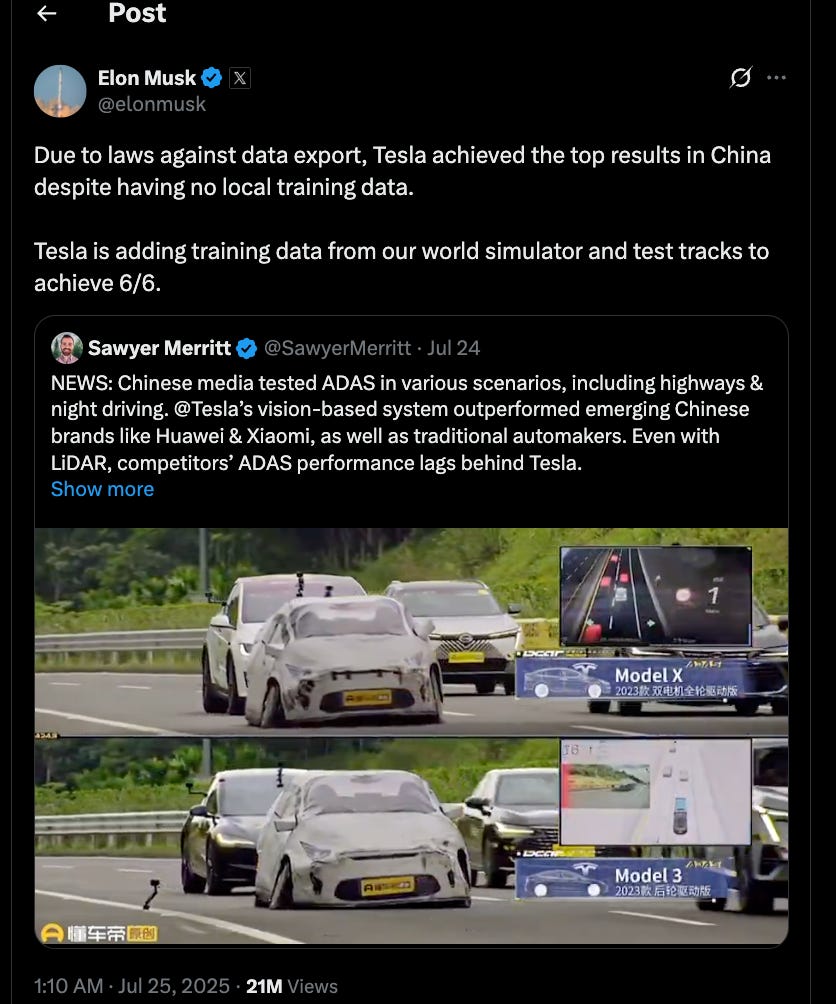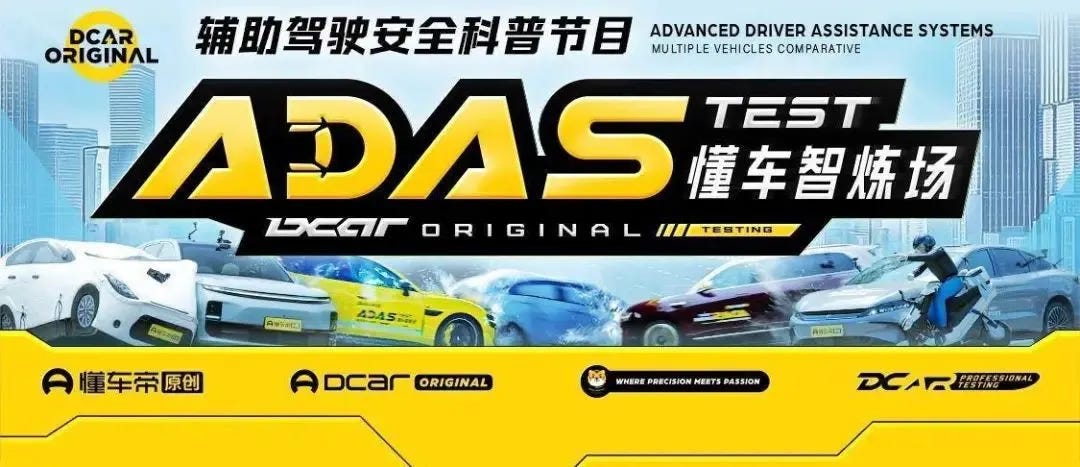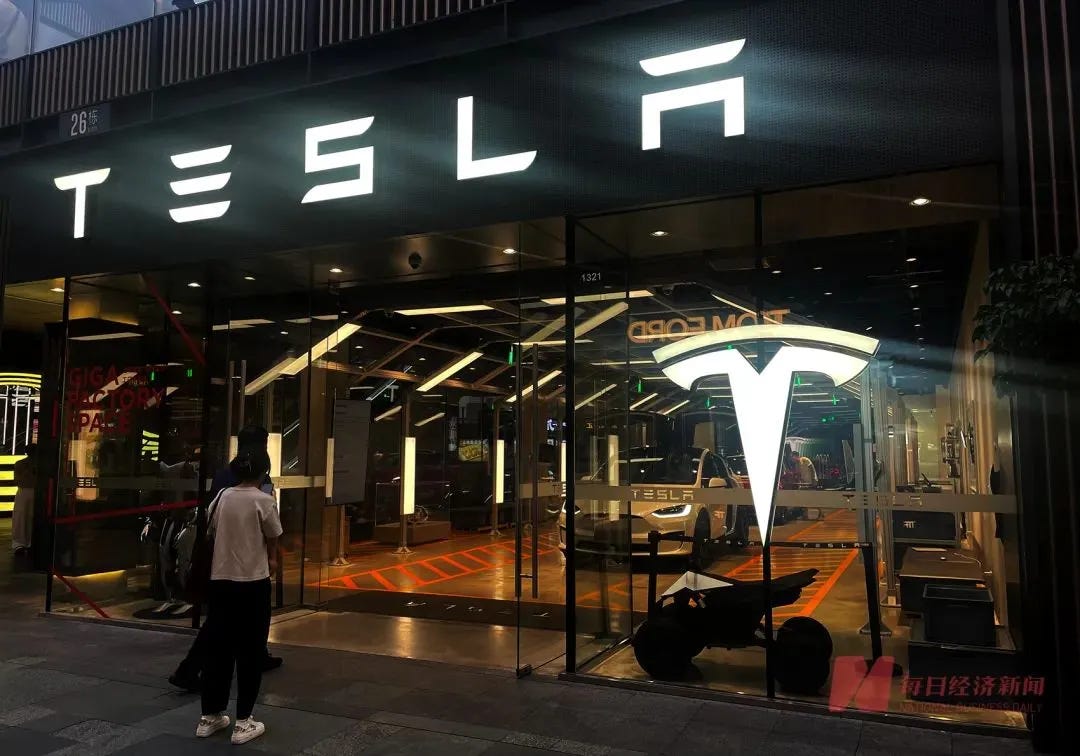Don’t Fear Tesla’s Lead: Hu Xijin Warns Against Online Nationalist Overreaction
The former Global Times editor says Tesla's success is a boon, not a bane, for China's EV brands.
A recent collaborative program between Dongchedi (a ByteDance-owned automotive media platform) and China Central Television, the Chinese state broadcaster, tested the intelligent driver-assistance systems of over 30 popular electric vehicle (EV) models sold in China. These tests simulated complex highway scenarios—including sudden obstacles and construction zones—to assess each vehicle’s ability to respond safely using Level 2 assisted driving systems. Tesla’s vehicles, particularly the Model 3 and Model X, outperformed most domestic brands, passing five out of six scenarios. The average pass rate across all tested vehicles was only about 36%, highlighting significant limitations across the industry.

The results quickly drew national attention and controversy. Tesla’s strong showing prompted some Chinese internet users to accuse Dongchedi of favoring foreign brands and unfairly targeting domestic EV makers. Several Chinese automakers, including leading players like AITO and NIO, declined to comment on the test results, while others, such as GAC Toyota, defended their performance. Some critics also questioned the test’s methodology and accused the organizers of inconsistent or biased testing conditions. In response, Dongchedi emphasized that the videos were for educational purposes and did not constitute official safety rankings.
This debate comes amid heightened regulatory scrutiny in China over driver-assistance systems. Authorities have recently banned promotional use of terms like “autonomous driving” and warned that drivers remain legally responsible under current Level II technologies. The controversy around Dongchedi’s test highlights the challenges in balancing public education, industrial competitiveness, and regulatory clarity in China’s rapidly evolving EV sector. It also underscores how Tesla’s continued leadership in assisted driving remains both a technological benchmark and a point of national sensitivity.
The following is today’s commentary by Hu Xijin, the former Chief Editor of the Global Times newspaper, which Hu led to prominence but often derided as China’s leading nationalist tabloid. I find it interesting to see that the formidable commentator, still wielding agenda-shaping discourse power, is widely seen as increasingly vocal against runaway nationalism in recent years, including in this case.
这就算“崇洋媚外”了?千万别这样乱喷!
This Counts as ‘Worshipping the West’? Give Me a Break!
Dongchedi recently partnered with a state television broadcaster to test intelligent assisted driving systems across a wide range of electric vehicles (EVs), producing a video program that has ignited significant public controversy. The reason lies in the videos, which revealed the limitations of the intelligent driving functions in the flagship EV models of nearly all well-known brands familiar to Chinese consumers. These videos served as a public reminder of the capabilities and safety boundaries of assisted driving technologies.
Among the tested vehicles, Tesla performed relatively better. In response, many domestic automakers declined to comment on Dongchedi’s evaluation. Meanwhile, numerous internet users lashed out at Dongchedi, accusing it of favoring Tesla while suppressing domestic brands. Subsequently, the state broadcaster that co-produced the program removed the word “collaborated” from its social media posts, seemingly distancing itself from Dongchedi.
The test results released by Dongchedi were unfavorable for all domestic automakers—this was inevitable. It’s understandable that some fans of Chinese brands are angry; after all, these brands have built strong, loyal fan bases, which is a positive sign in itself. However, in Old Hu’s view, the key point is that Dongchedi’s testing must be professional and adhere to principles of fairness and impartiality. As long as these two criteria are met, public discourse should respond to the results rationally, without interpreting them through the lens of whether the test supports or undermines domestic brands.
Given that this program was originally co-produced by Dongchedi and a state-run television station, its fairness and impartiality should carry more credibility than a typical commercial platform’s independent evaluations. While the results happened to favor Tesla, which prompted Elon Musk to repost Dongchedi’s findings on X and use the occasion to promote Tesla’s driver-assistance reliability, it is well known in the industry that Tesla generally avoids conventional public relations and commercial advertising. Therefore, the idea that Dongchedi and the state broadcaster produced these results because they were paid by Tesla is highly unlikely.
As for the test’s technical sophistication, Old Hu admits I’m not an expert—nor are most people. Some argue that end users’ driving experience with their own vehicles is the most convincing form of assessment, and there is some truth to that. However, as an automotive media platform, Dongchedi has every right to collaborate with a state broadcaster on such tests. Especially now, as the Ministry of Public Security strengthens its regulatory oversight of “intelligent driving,” the exercise of such rights should not be seen as problematic.
Regarding the dissatisfaction caused by the test results, Old Hu offers the following perspective. First, as long as the two principles mentioned above—professionalism and fairness—are upheld, I believe our public discourse should, in general, accept the outcome of any evaluation. If manufacturers are willing to identify their shortcomings through such tests and use that insight to drive their own improvement, this should be regarded as a constructive attitude.
Objectively speaking, China’s electric vehicle (EV) industry has developed at an extraordinary pace. It is entirely normal that some shortcomings still exist. China’s EV sector possesses a complete and integrated industrial supply chain—even Tesla relies heavily on Chinese-made components. The idea that China’s EV industry might lose its market position simply because its intelligent assisted driving systems are not yet advanced enough is, frankly, highly improbable. We should take a calm and rational approach to the discovery and identification of problems. At the very least, public discourse as a whole should reflect such an attitude. It’s important to recognize that China still has ample time and space to address these challenges.
How should we view Tesla? In Old Hu’s view, the continued presence of Tesla among the leading ranks of EV makers—and its likely leadership in certain areas for the foreseeable future—is not a bad thing for China’s EV industry.
Electric vehicles (EVs) have become quite widespread in China, but their market share globally remains relatively low. According to a report by the International Energy Agency, nearly half of all car sales in China in 2024 was electric vehicles. In contrast, only about one-fifth of new cars sold in Europe are electric, and in Latin America, EVs account for just 4% of total car sales. Expanding the global EV market further will require the joint efforts of both Chinese manufacturers and Tesla. One could say that Tesla, while still a major global player, has now become something of a “companion runner” alongside China’s dominant EV industry. With Tesla and Chinese firms working together, the global EV market is bound to grow faster—creating new hope and new opportunities for the entire Chinese EV sector.
If even Tesla were to be quickly overwhelmed by Chinese brands, and the global EV market turned into a domain monopolized by Chinese manufacturers, it’s likely that Chinese companies would encounter even greater obstacles in expanding their overall market share. Think about it: if the EV market becomes one where China is “eating alone,” and in the coming years gasoline vehicles remain convenient and gasoline supplies remain abundant, would the Western world be willing to hand over their car markets to Chinese EV makers?
Therefore, Chinese companies must continue to push forward, while we also adopt a broader, more strategic outlook toward Tesla. China’s EV industrial chain is already highly complete, and one could say that Tesla has been “surrounded” by this supply ecosystem. In a certain sense, Tesla is already “fighting shoulder to shoulder” with the Chinese EV industry, working “hand in hand” to drive the global transition from gasoline-powered cars to electric vehicles. When Tesla happens to lead in a particular metric in China-based testing, let us respond with greater openness and maturity, rather than drawing such sharp lines between camps.





Very wise !